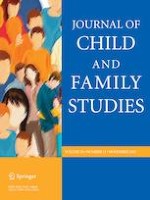11-10-2023 | Original Paper
Children’s Preferences for Mental Health Service Options that Include Exercise: A Pilot Study
Gepubliceerd in: Journal of Child and Family Studies | Uitgave 11/2023
Log in om toegang te krijgenAbstract
Approximately 20–40% of adolescents have diagnosable emotional and behavior problems. Of those youth with emotional and behavioral disorders, 55 to 80% do not receive needed mental health treatment. Youth with untreated emotional and behavioral problems are more likely to get into automobile accidents, have a drug/alcohol problem, drop out of high school, be arrested/incarcerated, or experience subsequent health or emotional and behavioral problems (Barkley, et al., 2008). Also, half of children treated with medication do not follow the medication regimen as prescribed or discontinue their medication altogether and more than half of families enrolled in evidence-based behavior therapy drop out. As such, other adjunctive approaches have been considered, such as exercise. The preferences children have for therapy are not well known, but their perceptions of treatments likely impact their engagement. The current pilot study sought to examine children’s preferences for medication, behavior therapy, exercise and some combination of these using a discrete choice experiment, a conjoint analysis technique. Participants were 44 children enrolled in a recreational and academic summer program, with 50% of the children previously meeting criteria for ADHD and/or scoring high in ADHD. Children prioritized behavioral outcomes and opportunities to engage in outdoor exercise at a highly intense level (e.g., running and swimming as fast as can, jumping). Simulation analyses or forecasting tools showed that children also preferred therapy that included exercise, and children preferred non-medication therapy that included exercise and group meetings with other children. Findings suggest that exercise added onto medication treatments, exercise added to therapy, and therapy that includes group meetings with other children have the potential to increase appeal of intervention and engagement in that intervention, which in turn might link to improved children’s mental health outcomes. Finally, chi-square analyses showed that children previously treated with medication preferred medication, while children who were medication naïve preferred group therapy with exercise. Implications for child engagement in evidence-based therapies and modifications to evidence-based therapies are discussed.
